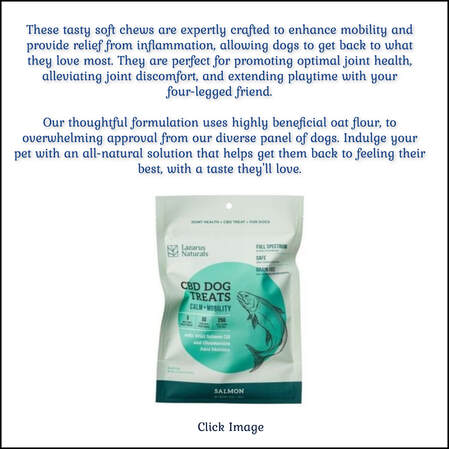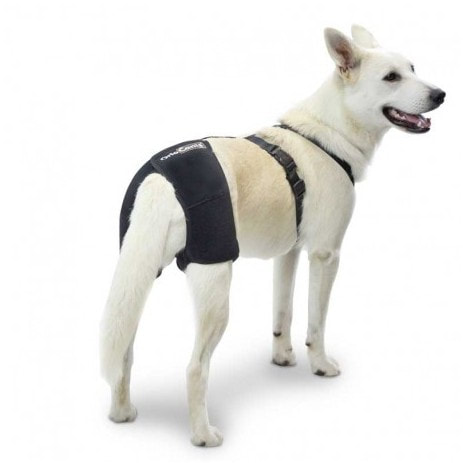|
BY PHIL ZELTZMAN, DVM, DIPL. ACVS
Canine hip dysplasia is commonly diagnosed, but which surgical treatment to offer can be confusing. Suspicion about hip dysplasia often arises from the history. It classically includes bunny hopping as well as difficulty rising after rest, going upstairs or jumping up. Decreased activity, intermittent lameness and a reluctance to run are other common complaints. Examination of a dysplastic dog may include pain on hip extension along with a decreased range of motion, atrophy of thigh muscles and weight shifting to the front legs. Hip pain is basically due to joint laxity in young dogs and to degenerative changes in older dogs. |
|
Confirmation of hip dysplasia requires quality hip radiographs, which should be done under heavy sedation or general anesthesia to achieve proper positioning. X-rays taken on an awake patient may lead to an erroneous diagnosis.
We will not discuss which X-ray technique (PennHip vs. OFA vs. other methods) is better. It is not the purpose of this column. It is, however, important to remember that there is no correlation between the severity of radiographic changes and clinical signs. In other words, one patient with “horrible hips” on X-rays may be functional, while another dog with mild hip dysplasia may be in great pain. There are several pitfalls to avoid before assuming a dog has hip dysplasia. Differential diagnoses include lombosacral disease (“cauda equina” syndrome), degenerative myelopathy, prostatic disease, uni or bilateral ACL tears, and panosteitis. |
|
Once the diagnosis is confirmed, there are essentially two mainstream surgical options for young dogs with salvageable hips (triple pelvic osteotomy and juvenile pubic symphysiodesis), and two salvage procedures for patients with severe degenerative joint disease (femoral head ostectomy and total hip replacement).
|
|
A triple pelvic osteotomy (TPO) is usually performed in young dogs with poor coverage of the femoral head. Surgery entails freeing up the acetabulum by making a cut into the pubis, the ischium and the ilium--hence the “triple.” The acetabulum is then rotated ventrolaterally to better cover the femoral head. The ilial cut is then stabilized with a bone plate and screws. If there is very severe subluxation of the hip, no amount of rotation of the acetabulum will cover the femoral head, and therefore a TPO is not possible. If there are early signs of degenerative joint disease (DJD) of the hip, it is highly debatable whether a TPO is a good option. The TPO is usually reserved for dogs with subluxated but otherwise pristine hips. When bilateral TPOs are needed, most surgeons will stage them one or two months apart.
|
PLEASE research JPS before considering this option for surgery prior to issues. Surgeries that are done before an issue occurs may be premature and unnecessary and only for the vets benefit.
|
The juvenile pubic symphysiodesis (JPS) is a brilliant concept first described in 2001. The surgery involves destroying the growth plate of the pubis with electrocautery to stop the growth of the ventral aspect of the pelvis. As the dorsal portion of the pelvis continues to grow, both acetabuli progressively rotate ventrolaterally and slowly improve the coverage of both femoral heads. The end result is more stable hips that have less risk of DJD. In essence, the JPS has the same effect as bilateral TPOs, except that it only requires one procedure. In addition, it is much less invasive and costly.
The best timing for JPS is about 4 months. Studies show that waiting just one month beyond that age significantly decreases the effectiveness of JPS. The main challenge of JPS is therefore early screening of puppies at risk for hip dysplasia (German shepherds, Labradors, golden retrievers) or knowing the parents’ hip conformation. Some surgeons recommend taking radiographs of at-risk puppies before 4 months, which could be done at the time of prepubertal neutering. Intact puppies must be neutered at the time of the JPS. Otherwise, puppies with “artificially” improved hip conformation could be bred by an unethical owner and spread poor genes. |
|
Femoral head ostectomy and total hip replacement are considered salvage procedures, which means they can be done at almost any age. They can be offered, for example, when all conservative management options have failed to provide pain relief.
A femoral head ostectomy (FHO) involves removing the femoral head and neck and suturing the joint capsule. Over the next two months, fibrous tissue will connect the acetabulum and the femoral shaft. A pseudoarthrosis, or fibrous “false joint,” is formed. Postop physical therapy is highly encouraged to provide a nice and comfortable range of motion. The limiting factor of an FHO is the patient’s weight, though no clear guidelines exist. Some surgeons are reluctant to perform an FHO on patients above a certain weight, and that weight varies from person to person. When clients cannot afford a total hip replacement in a large or giant breed, a serious discussion should occur so that they do not expect miracles from an FHO. In short, small and medium dog breeds are expected to do very well after an FHO. Larger dogs have an outcome that is more difficult to consistently predict, though they typically become more comfortable. |
|
A total hip replacement (THR) consists of replacing the acetabulum with a plastic cup, and the femoral head by a metal ball attached to a metal femoral stem. THR is often considered the Cadillac treatment, as it provides a pristine hip to a previously arthritic, pain-filled dog. For decades, the gold standard has been cemented systems. The dreaded complication is infection of the bone cement, or polymethyl-methacrylate, used to secure the implants.
More and more surgeons seem to progressively switch to a non-cemented system, which relies on bone ingrowth into the implants. The systems available can accommodate patients of almost any size, as implants are now made for smaller dogs. The limiting factor of a THR is financial, which is justified by the cost of training, personnel, equipment and implants. Whichever option is chosen, the same recommendation offered as part of conservative management of hip dysplasia should be implemented postoperatively. This includes weight management, joint supplements, exercise modification, physical therapy, pain medications, an “arthritis” diet, etc. Ultimately, treatment of hip dysplasia is a manageable disease. It should provide patients with pain relief and an improved quality of life. |
|
Phil Zeltzman, DVM, DACVS, is a small animal board-certified surgeon at Valley Central Veterinary Referral Center in Whitehall, Pa. His web site, DrPhilZeltzman.com, can be used by colleagues and clients to find reliable information about numerous surgical and medical topics. Pet lovers can subscribe to a free, weekly, informative newsletter.
|
Hip Braces
**Canine Arthritis And Joint is intended for informational, educational and entertainment purposes only and is not a substitute for medical advice, diagnosis or treatment. Do not attempt to self-diagnose or treat any health condition. You should always consult with a healthcare professional before starting any diet, exercise or supplementation program, before taking any medication, or if you have or suspect your pet might have a health problem. The opinions expressed by Canine Arthritis And Joint are not to be replaced for medical care. This website and the information contained herein have not been evaluated by the Food and Drug Administration. The information and opinions on Canine Arthritis And Joint are not intended and cannot be used to diagnose, treat, cure, or prevent any disease. This applies to people and pets!
This site uses affiliate links such as banners you may see that allows for paid commissions.
This site uses affiliate links such as banners you may see that allows for paid commissions.
Canine Arthritis And Joint © Copyright 2015-2024
Designed By Paw Prints Web Design
Designed By Paw Prints Web Design











